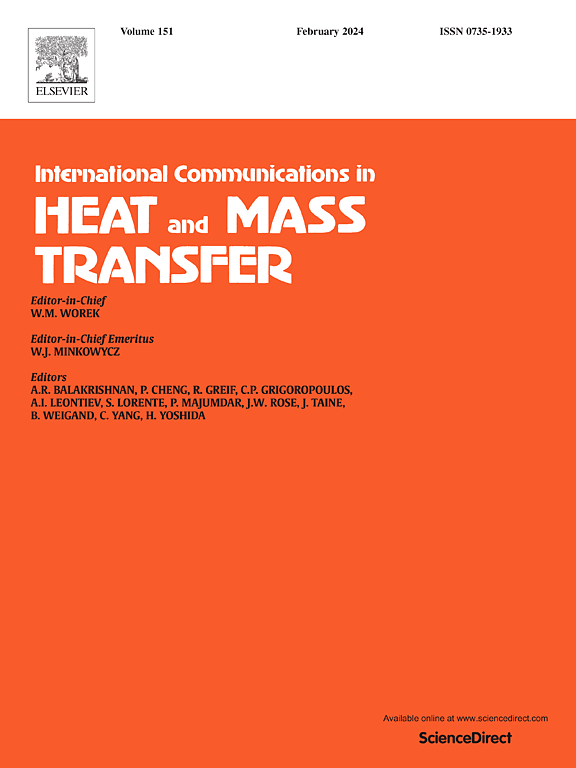一种人工智能驱动的孔隙率预测创新方法,用于估算阻力系数
IF 6.4
2区 工程技术
Q1 MECHANICS
International Communications in Heat and Mass Transfer
Pub Date : 2025-05-31
DOI:10.1016/j.icheatmasstransfer.2025.109132
引用次数: 0
摘要
在本文中,我们提出了一种基于人工智能(AI)的创新方法,通过预测空隙率来估计两相流中的阻力系数。为解决传统经验关系应用范围有限的问题,本研究采用随机森林、Transformer、Mamba和ridge回归4种AI模型对水平气液两相流含气率数据库(6554个数点)进行训练和预测。通过分析输入参数组合对预测误差的影响,发现液速对减小预测误差起关键作用,最优参数组合为管径长比、压力和液速。结果表明,随机森林模型具有最好的性能,平均误差(ME)仅为1.32%。进一步的研究表明,变压器模型在评估单个参数的影响时具有较高的准确性。最后,通过空隙率与阻力系数的相关公式验证了随机森林在估算阻力系数方面具有较高的精度。该研究揭示了人工智能模型在复杂两相流参数预测中的潜力,为阻力系数的智能预测提供了新的思路。本文章由计算机程序翻译,如有差异,请以英文原文为准。
An AI-driven innovative approach for void fraction prediction to estimate drag coefficient
In this paper, we propose an innovative artificial intelligence (AI) -based method to estimate drag coefficients in two-phase flows by predicting void fraction. To solve the problem of the limited application range of traditional empirical relationships, four AI models, namely random forest, Transformer, Mamba and ridge regression, are used in this study to train and predict horizontal gas-liquid two-phase flow void fraction database (6554 data points). By analyzing the influence of input parameter combination, it is found that liquid velocity plays a key role in reducing the prediction error, and the optimal parameter combination is pipe diameter to length ratio, pressure and liquid velocity. The results show that the random forest model has the best performance, with a mean error (ME) is only 1.32 %. Further research has shown that the Transformer model has high accuracy in evaluating the effects of a single parameter. Finally, the high accuracy of random forest in estimation of drag coefficient is verified by the correlation formula between void fraction and drag coefficient. This study reveals the potential of AI model in the prediction of complex two-phase flow parameters, and provides a new idea for intelligent prediction of drag coefficient.
求助全文
通过发布文献求助,成功后即可免费获取论文全文。
去求助
来源期刊
CiteScore
11.00
自引率
10.00%
发文量
648
审稿时长
32 days
期刊介绍:
International Communications in Heat and Mass Transfer serves as a world forum for the rapid dissemination of new ideas, new measurement techniques, preliminary findings of ongoing investigations, discussions, and criticisms in the field of heat and mass transfer. Two types of manuscript will be considered for publication: communications (short reports of new work or discussions of work which has already been published) and summaries (abstracts of reports, theses or manuscripts which are too long for publication in full). Together with its companion publication, International Journal of Heat and Mass Transfer, with which it shares the same Board of Editors, this journal is read by research workers and engineers throughout the world.

 求助内容:
求助内容: 应助结果提醒方式:
应助结果提醒方式:


